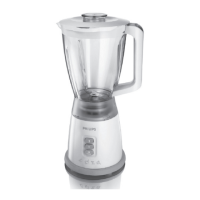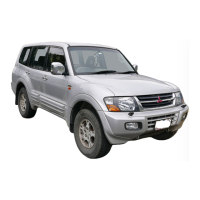29-2 Chapter 2 Part B 2.OL and 2.4L four-cylinder engines
Camshaft bearing cap bolts
8X25 ..............................................
8X65 ..............................................
Cylinder head bolts
1992 and earlier
Coldengine .......................................
Warmengine.. ....................................
1993 on
Step1 ...........................................
Step2 ...........................................
Step3 ...........................................
Step4 ...........................................
Step5 ...........................................
Crankshaft pulley bolts ..................................
Crankshaft pulley center bolt .............................
Engine mounts
Support bracket-to-engine ..............................
Front insulator-to-frame ................................
Front insulator nuts ..................................
Front stopper bolts ...................................
Rear insulator-to-transmission ..........................
Rear insulator-to-number 2 crossmember
Manual transmission ...............................
Automatic transmission .............................
Rearstopper .......................................
Frontcasebolts ......................................
Oil filter bracket bolts .................................
Oil pump sprocket nut ..................................
Oil pump cover bolts ...................................
Oilpanbolts ............................. ..- ..........
Oilpandrainbolt ......................................
Oil seal retainer bolts ...................................
FlywheeUdriveplate bolts ................................
Silent Shaft sprocket nut ................................
Automatic tensioner bolt ................................
Timing belt tensioner bolt ..................... _. .........
Tensioner “B” bolt .......................................
Timingbeltcoverbolts ..................................
1 General information and engine identification
This Part of Chapter 2 is devoted to in-vehicle engine repair proce-
dures for the 2.OL and 2.4L four-cylinder engines. Information concerning
engine removal and installation and engine block and cylinder head over-
haul can be found in Part D of this Chapter.
The following repair procedures are based on the assumption that the
engine is installed in the vehicle. If the engine has been removed from the
vehicle and mounted on a stand, many of the steps outlined in this Part
of Chapter 2 will not apply.
The Specifications included in this Part of Chapter 2 apply only to the
procedurescontained in this Part. Part D of Chapterecontains the Specifi-
cations necessary for cylinder head and engine block rebuilding.
2 Repair operations possible with the engine in the vehicle
4.3 Carefully disconnect the spark plug wires from the clips
Many major repair operations can be accomplished without removing
the engine from the vehicle.
gasket, crankshaft oil seals and cylinder head gasket are all accessible
with the engine in place.
Clean the engine compartment and the exterior of the engine with
some type of degreaser before any work is done. It will make the job easier
and help keep dirt out of the internal areas of the engine.
Depending on the components involved, it may be helpful to remove
the hood to improve access to the engine as repairs are performed (refer
to Chapter ii if necessary). Cover the fenders to prevent damage to the
paint. Special pads are available, but an old bedspread or blanket will also
work.
Exterior engine components, such as the intake.and exhaust man-
ifolds, the oil pan (and the oil pump), the water pump, the starter motor,
the alternator, the distributor and the fuel system components can be re-
moved for repair with the engine in place.
Since the camshaft and cylinder head can be removed without pulling
the engine, valve component servicing can also be accomplished with the
engine in the vehicle. Replacement of the timing belt and sprockets is also
possible with the engine in the vehicle.
If vacuum, exhaust, oil or coolant leaks develop, indicating a need for
gasket or seal replacement, the repairs can generally be made with the
engine in the vehicle. The intake and exhaust manifold gaskets, oil pan
In extreme cases caused by a lack of necessary equipment, repair or
replacement of piston rings, pistons, connecting rods and rod bearings fs
possible with the engine in the vehicle. However, this practice is not rec-
15to19
14toi5
65 to 72
73 to 80
58
Loosen all bolts 3 turns in sequence (see illustration 13.10)
14
Turn an additional go-degrees
Turn an additional go-degrees
15to21
80 to 94
29 to 36
22 to 29
14to22
72 to 108 in-lbs
14 to 17
108 to 168 in-lbs
14toi8
25 to 40
15to19
11 to 15
36 to 43
132 to 156 in-lbs
48 to 72 in-lbs
26 to 32
84 to 108 in-lbs
94 to 101
25 to 28
14to20
32 to 40
ii to 15
84 to 108 in-lbs

